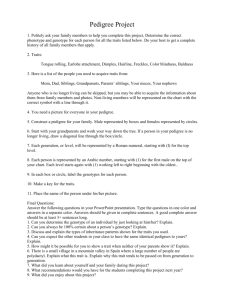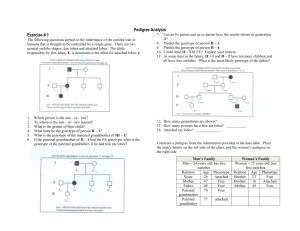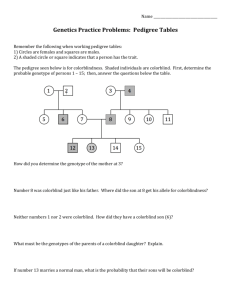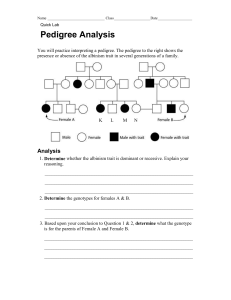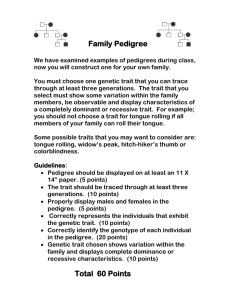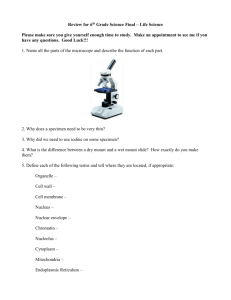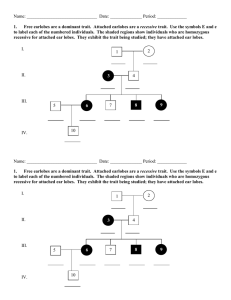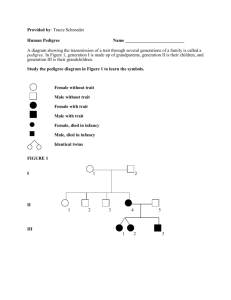Pedigree wksht
advertisement
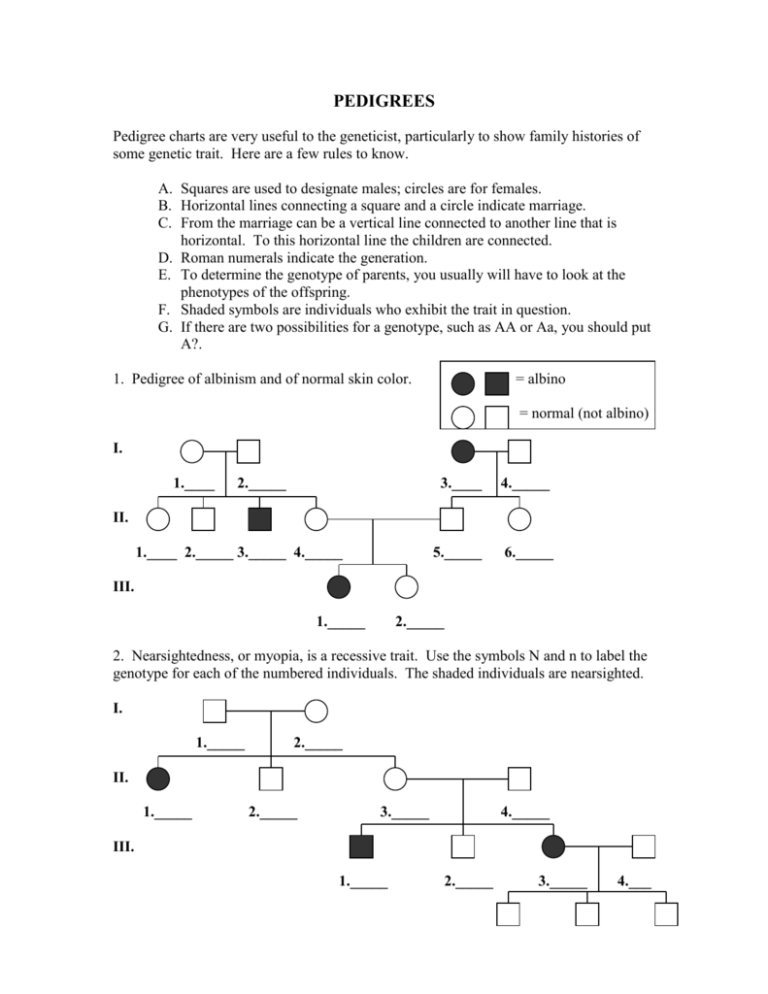
PEDIGREES Pedigree charts are very useful to the geneticist, particularly to show family histories of some genetic trait. Here are a few rules to know. A. Squares are used to designate males; circles are for females. B. Horizontal lines connecting a square and a circle indicate marriage. C. From the marriage can be a vertical line connected to another line that is horizontal. To this horizontal line the children are connected. D. Roman numerals indicate the generation. E. To determine the genotype of parents, you usually will have to look at the phenotypes of the offspring. F. Shaded symbols are individuals who exhibit the trait in question. G. If there are two possibilities for a genotype, such as AA or Aa, you should put A?. 1. Pedigree of albinism and of normal skin color. = albino = normal (not albino) I. 1.____ 2._____ 3.____ 4._____ 5._____ 6._____ II. 1.____ 2._____ 3._____ 4._____ III. 1._____ 2._____ 2. Nearsightedness, or myopia, is a recessive trait. Use the symbols N and n to label the genotype for each of the numbered individuals. The shaded individuals are nearsighted. I. 1._____ 2._____ II. 1._____ 2._____ 3._____ 4._____ III. 1._____ 2._____ 3._____ 4.___ 3. Free ear lobes are a dominant trait. Attached ear lobes are a recessive trait. Use the symbols E and e to label each of the numbered individuals. The shaded regions are individuals who have attached ear lobes. I. 1._____ 2._____ II. 1._____ 2._____ III. 1._____ 2._____ 3._____ 4._____ 5._____ IV. 1._____ 4. Here is another family pedigree on free and attached ear lobes. Remember: Put E? if the entire genotype of the dominant form cannot be determined. I. 1._____ 2._____ II. 1._____ 2._____ III. 1._____ 2._____ 3._____ 4._____ IV. 1._____ 2._____

